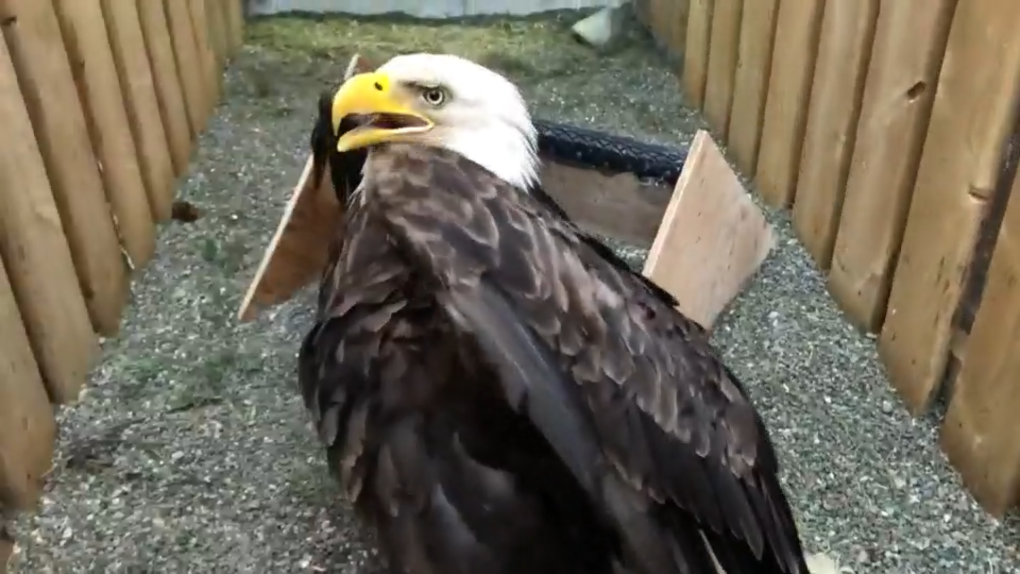
A bald eagle once near death squawked loudly on Saturday as it was carefully checked over just before being released into the wild.
“He’s feisty, his feather condition looks good, his body condition is good,” said Wildlife Veterinarian Dr. Malcolm McAdie.
It’s been a long road of recovery for this bird.
When it first showed up at the North Island Wildlife Recovery centre in Errington, many of its bones were broken.
“The condition he came in, he definitely wouldn’t have made it,” said NIWRA Animal care worker Anya Golden.
“He’s a wounded warrior. Ready to go back into the wild,” said Derek Downes, NIWRA’s Animal Care Supervisor.
It happened just as staff at the recovery centre began to prepare for an influx of wild patients following a record-setting cold winter that hit Vancouver Island and reduced the herring spawn this spring.
“When you get to late winter, they really are struggling to find enough to eat,” said Dr. McAdie.
“In the last years the herring spawn has been getting smaller and smaller, just like the salmon. And that always has a ripple effect, for eagles especially,” said Downes.
Bald eagles are at their highest concentration in all of Canada on B.C.’s coast, and numbers are estimated to reach as high as 30,000 raptors in a healthy year.
“They’re amazing to watch, they are regal, and I mean they’re a staple of the Pacific Northwest,” said Downes.
But according to Downes in 2022, provincial biologists recorded a drop in the young in bald eagle nests. So that combined with the avian flu that took a harsh toll on wild birds and record consecutive summer droughts, has experts on edge going into this spring.
“Weather extremes and temperature extremes do make it challenging for them,” said Downes.
Those there to watch the animal be returned to the wild loudly cheered and clapped as the bird took flight, and flew off — back to where it belongs.